Xiaomi Mi 8
Xiaomi presented the new Mi flagship “Xiaomi Mi 31” on May 8st. The powerful smartphone was released in 3 versions. In terms of hardware, the standard model of the Xiaomi Mi 8 is very much based on the recently released one Xiaomi Mi Mix 2S . With the premium model, the so-called Xiaomi Mi 8 Explorer Edition, Xiaomi shows us new technologies, such as a fingerprint sensor integrated in the display. The Xiaomi Mi 8 SE is again a mid-end device from the manufacturer that is based on the new Qualcomm Snapdragon 710 system-on-chip.
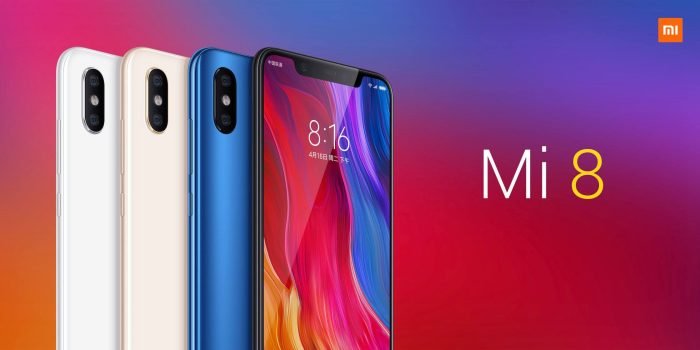
Notch and AMOLED display
The Xiaomi Mi 8 is the first Mi smartphone with a “notch”. At the same time, it is also the first Mi smartphone with an AMOLED display panel. The manufacturer of the panel is Samsung. The resolution of the display is 2248 x 1080 pixels, with a display diagonal of 6.21 inches. The aspect ratio is an unusual 18.7:9. Xiaomi specifies the screen-to-body ratio as 86.68%.
Despite the huge display, the smartphone is not much larger than a normal 154.9 inch mobile device with dimensions of 74.8 x 7.6 x 5.5 mm. With an above-average luminance of a maximum of 600 cd / m², the Mi 8 is guaranteed to be easy to read even outdoors. The color accuracy of the panel is based on the DCI-P3 color space. A point density of 403 DPI ensures a razor-sharp display. Further display features are a contrast ratio of 60000: 1 and the output of Mobile HDR (HDR10), which further enhances the display with the corresponding HDR content.
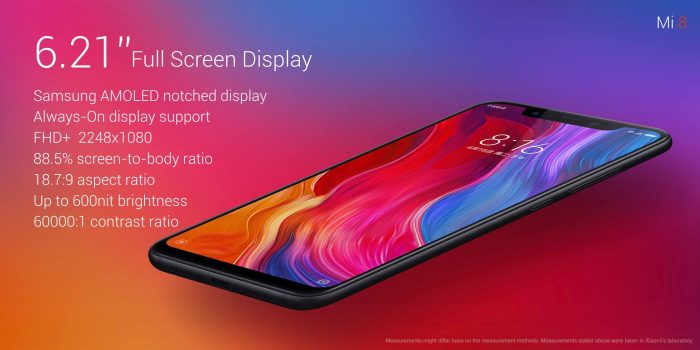
The so-called “notch” is very trendy. This is a notch in the upper part of the display that creates space for the front camera and sensors. There's a lot hidden behind the notch on the Xiaomi Mi 8. The front camera, the handset and the proximity sensor are housed there as standard. There is also an infrared sensor and an infrared light, which are intended to improve the face unlock function. This makes it possible to unlock the smartphone in poor lighting conditions or even at night.
Processor and memory
As well as that Xiaomi Mi Mix 2S The Mi 8 is equipped with the current high-end SoC "Qualcomm Snapdragon 845". The system-on-chip consists of a total of 8 Kryo 385 processor cores that clock at up to 2.8 GHz. Compared to last year's SoC, the Snapdragon 835, the new Snapdragon 845 works up to 30% faster. In the current AnTuTu benchmark, the smartphone achieved an outstanding score of 301.472 points and would therefore be even faster than that Xiaomi Mi Mix 2S (273.741 points) and that Xiaomi Black Shark (279.464 points). Despite the increased performance, Qualcomm has further optimized the energy efficiency. The SoC's processor graphics are also new. The Adreno 630 GPU promises enough performance to be able to play current mobile and AR games smoothly.
The storage equipment is also impressive. The "standard model" appears with a 6GB LPDDR4X RAM and a choice of 64GB, 128GB or 256GB UFS2.1 flash memory. The generous and fast memory ensures smooth multitasking. There is no provision for memory expansion using a MicroSD memory card.
Camera
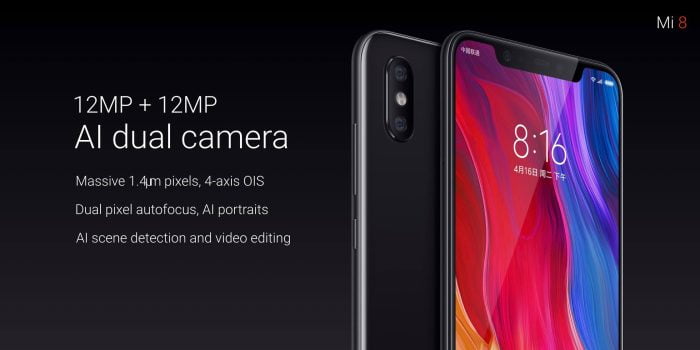
main camera
The dual main camera of the Xiaomi Mi 8 is no different from the main camera of the Xiaomi Mi Mix 2S. The smartphone uses a 12 megapixel Sony IMX363 main sensor with f / 1.8 aperture and optical image stabilization (4-axis OIS). The secondary sensor is a 12 megapixel Samsung S5K3M3 with f / 2.4 aperture and a telephoto or portrait lens. The Mi 8 scores slightly better than the Mi Mix 2S in DxOMark. 105 points are achieved in the photo benchmark and 88 points in the video benchmark.
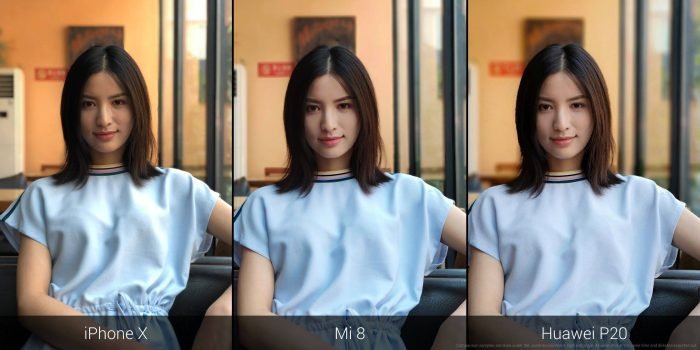
Above all, DxOMark rates the accurate color reproduction, the lightning-fast autofocus, the very low noise component and the very well-functioning bokeh effect as positive. Unwanted color fringing, deviations in the white balance and sometimes loss of detail, even in good lighting conditions, are criticized. You can find the full DxOMark review for the Xiaomi Mi 8 camera under the following link: dxomark.com/xiaomi-mi-8-camera-review-challenging-best/

The Artificial Intelligence (AI) camera function is also on board. This enables a dynamic bokeh effect, image enhancement through scene recognition, as well as the automatic recognition and translation of business cards, currencies and other texts. The main camera records videos with maximum 4K resolution at 30 frames per second. The full HD video recording function is unfortunately limited to 30 frames per second. Slow motion recordings are possible in full HD with up to 240 frames per second!
Front camera
The front camera uses a 20 megapixel image sensor. Various beauty filters and a “beauty AI” artificially spice up selfies. Other features include an HDR recording mode, face detection, a bokeh effect mode, a mirror function and a 1080p video recording function.
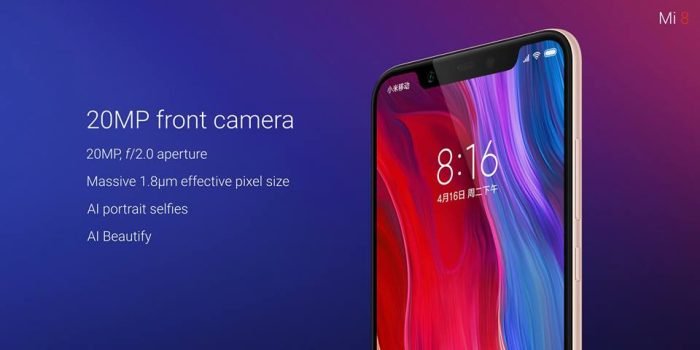
connectivity
The Xiaomi Mi 8 supports the world's most common cellular frequencies and bands. Here is an overview of your individual frequency bands.
| Mobile radio frequencies / bands |
| GSM: B2 / B3 / B5 / B8 CDMAlX / EVDO: BC0 WCDMA: B1 / B2 / B4 / B5 / B8 TD-SCDMA: B34 / B39 TD-LTE: B34 / B38 / B39 / B40 / B41 FDD-LTE: B1 / B2 / B3 / B4 / B5 / B7 / B8 / B12 / B17 / B20 |
The smartphone is ideally equipped for the German market in terms of mobile phone support. The LTE frequencies common in this country are all supported. As a dual SIM smartphone, the mobile device can be equipped with two SIM cards. Each of the two slots is LTE-capable. The smartphone is equipped with a Dual-AC MU-MIMO WiFi module and a Bluetooth 5.0 module for wireless data transmission.
MIUI 10, dual GPS and others
Xiaomi's user interface appeared in version 8 with the launch of the Xiaomi Mi 10. The so-called MIUI 10, which is based on Android 8.1, has been visually polished and expanded to include profound functions. For example, a control option for all of the manufacturer's smart home devices was implemented. As "Powered by AI", MIUI 10 also contains useful AI functions, such as camera AI, which creates a software bokeh effect and improves recordings even on the manufacturer's older devices.
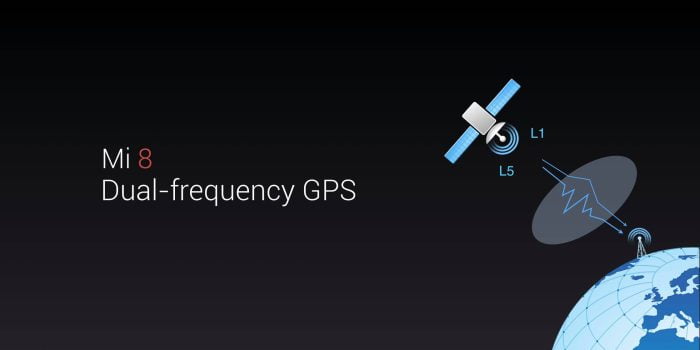
The first-time use of a dual-frequency GPS is also new. Dual GPS should enable more precise localization with accompanying better navigation accuracy, even in urban areas. The other sensors include an ultrasonic distance sensor, a gyroscope, a barometer, an acceleration sensor, an e-compass, a Hall sensor and an ambient light sensor. NFC is available and the smartphone also has a fingerprint scanner on the back. There is no 3.5 mm audio jack. Xiaomi specifies the capacity of the (non-exchangeable) battery as 3400 mAh. This can be charged with a cable via USB-C. Quick Charge 4.0 is used as a quick charge function.
Xiaomi Mi 8 Explorer Edition
The Explorer Edition of the smartphone is the flagship model of the new Mi 8 smartphone series. There are already differences to the standard model in terms of design. The smartphone comes with a transparent back, which provides a view of the inside of the smartphone. At the same time, the manufacturer presents two new technologies with the Xiaomi Mi 8 Explorer Edition. The smartphone has integrated the fingerprint sensor into the display so that, unlike the standard model, it is no longer available on the back.
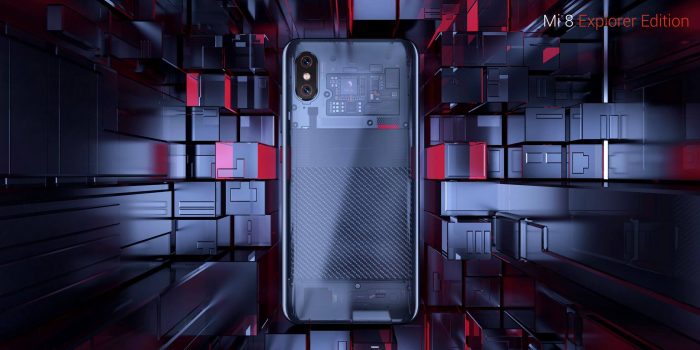
Another exclusive feature of the Explorer Edition is 3D facial recognition (“Face ID”). Using dot matrix projections, a 3D image of the face is created, making it possible to unlock the smartphone even more securely. In addition, Xiaomi's Face ID recognizes facial muscle movements, which is why Xiaomi did not miss the opportunity to implement the "Anijomis" known from Apple in its own implementation.
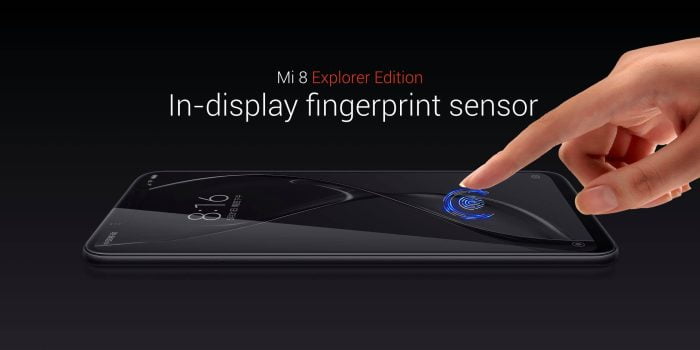
There are minor differences in terms of the memory configuration and the battery. So the Mi 8 Explorer Edition comes with a larger 8GB LPDDR4X memory and a 128GB UFS2.1 data memory. In contrast to the standard model, the capacity of the battery is only 3000 mAh. Presumably, this is a space-saving measure due to the additional sensors. The extent to which the lower battery capacity affects the runtime remains to be seen.
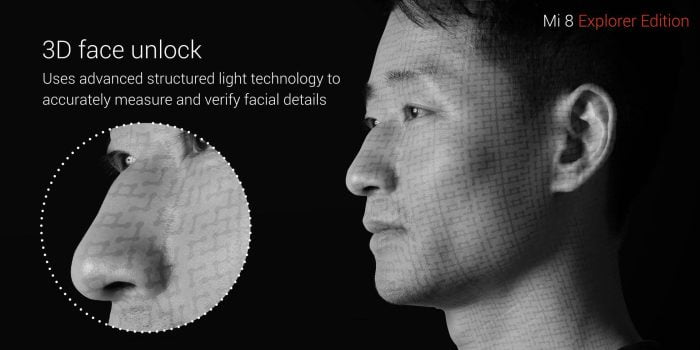
Price and availability
The Xiaomi mi 8 is available in blue, gold, black and white. The model with 6GB + 64GB storage is already available for 2699 yuan, the equivalent of 360 €, the model with 6GB + 128GB storage costs 2999 yuan, which is the equivalent of 403 €. The model with 6GB + 256GB storage costs 3299 yuan or € 443. The Explorer Edition of the Xiaomi Mi 8 will cost 3699 yuan. The equivalent of just under € 494.
As soon as we get test copies of the two Xiaomi Mi 8 models, the detailed test reports will follow!

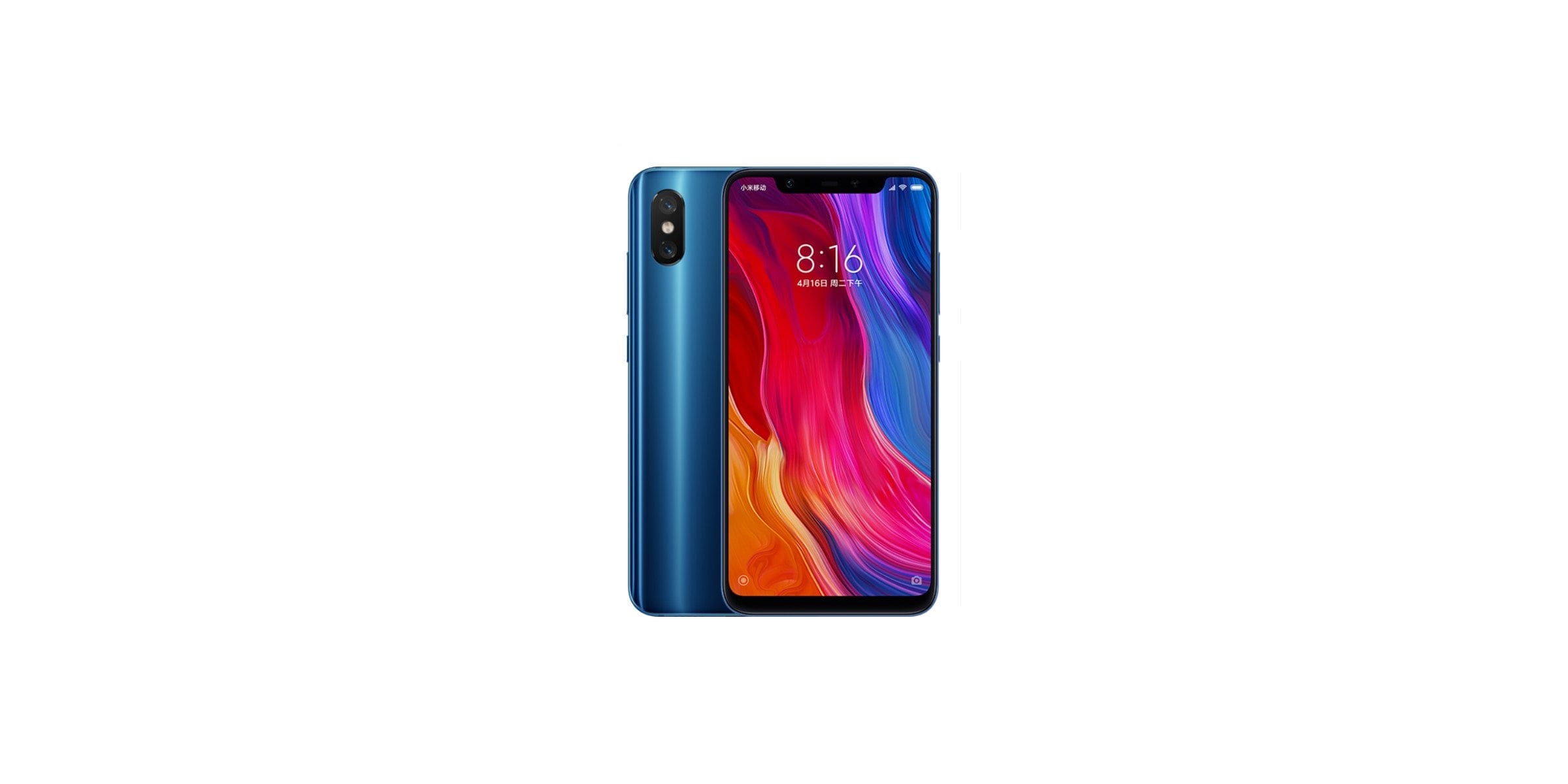
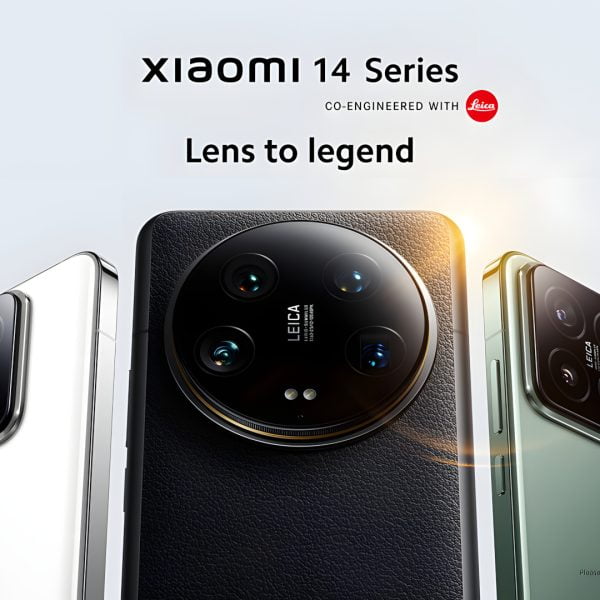


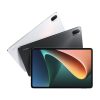
Ring
31. May 2018 21 to: 58
Hey fun Wireless charging on both phones or just on the expensive? Would be great to hear something.
Vollkaracho
1. June 2018 07 to: 18
According to my information, no model in the Mi 8 range offers wireless stores.
Timo admin
1. June 2018 10 to: 48
Hi Ring, Vollkaracho is right. None of the Mi 8 models support Qi charging. Here you can find all the specs for the smartphone: http://www.mi.com/mi8/specs/ (translate with google translator).
Ring
1. June 2018 12 to: 08
Alright thanks!
Balu
8. June 2018 17 to: 11
Sers
that is for me personally an exclusion criterion.
With Mi Mix 2s it works too.
Well then - a shame.
Will probably be the above.
CrowTearZz
27. June 2018 13 to: 14
Exclusion criterion only because no wireless charging is supported? So please. That's ridiculous.
Felix
7. July 2018 23 to: 46
I do not think so. Is the same for me, without qi without me. It's just too practical for that.